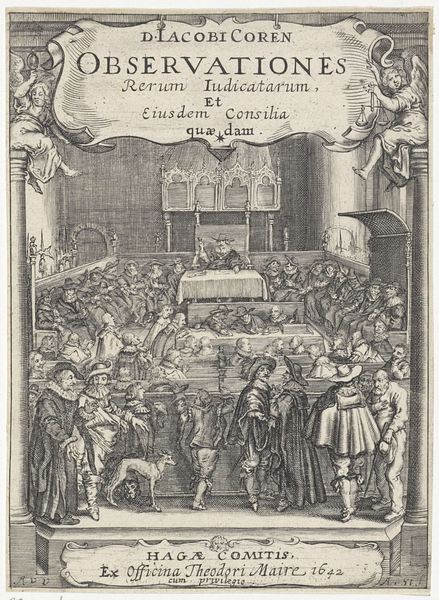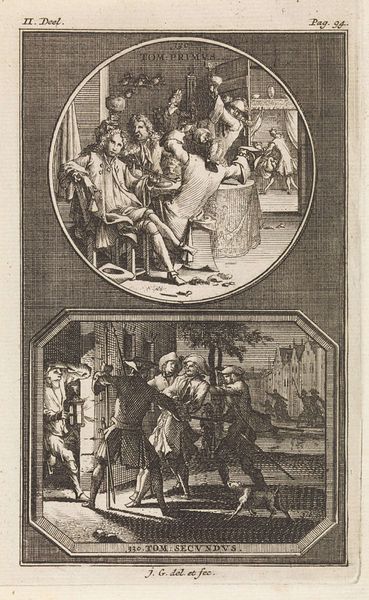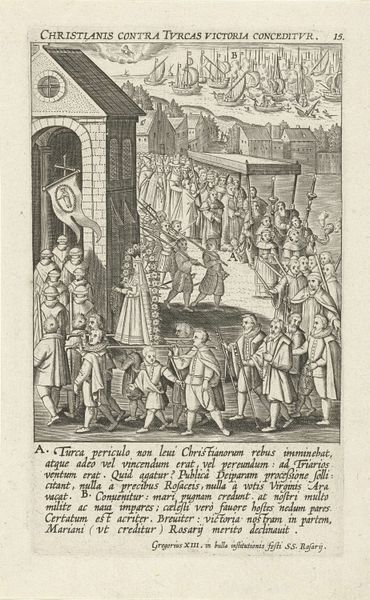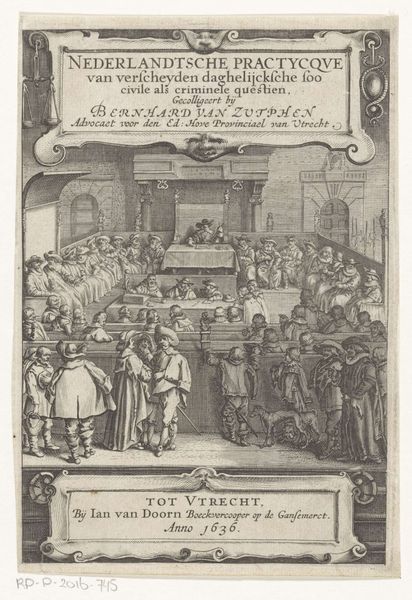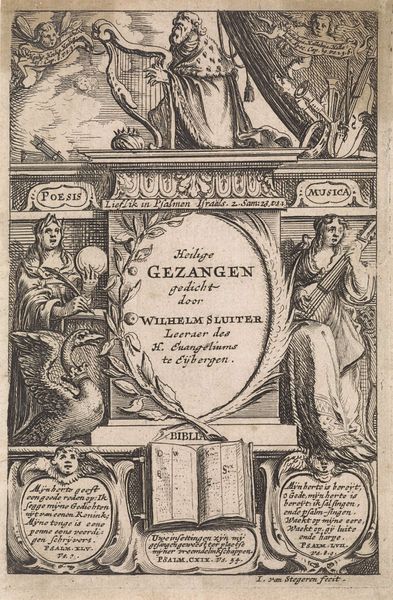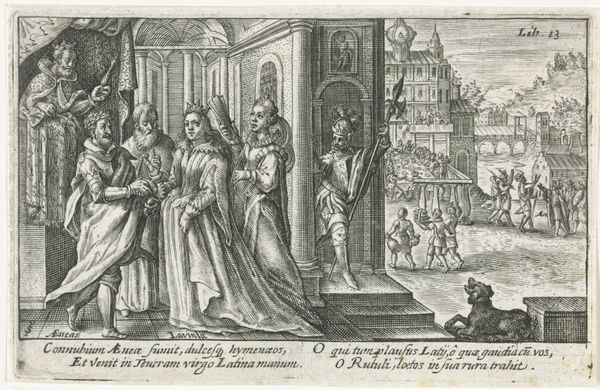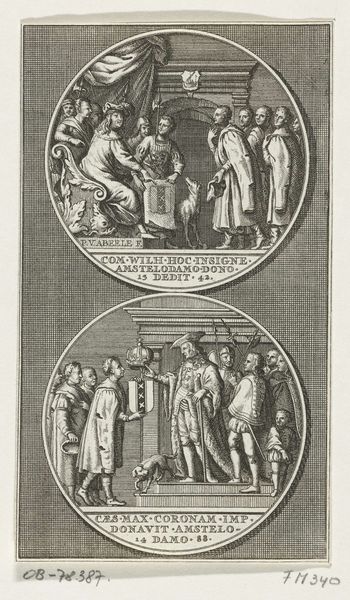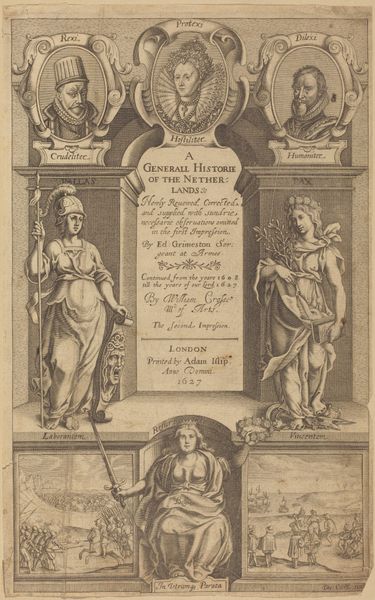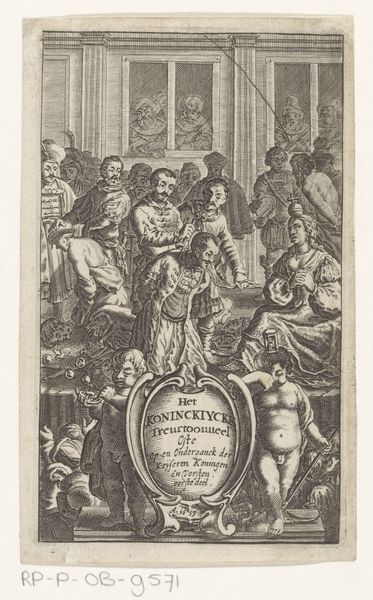
print, engraving
#
portrait
#
pen drawing
#
dutch-golden-age
# print
#
pen sketch
#
pencil sketch
#
old engraving style
#
line
#
cityscape
#
genre-painting
#
history-painting
#
engraving
Dimensions: height 166 mm, width 125 mm
Copyright: Rijks Museum: Open Domain
Curator: Let's examine this engraving, "Twee rechtsgeleerden voor een rechtzaal," or "Two Lawyers Before a Courtroom," from 1663, attributed to Abraham Dircksz. Santvoort. Editor: The detailed linework gives it a formal, almost stoic feel, and there's so much going on within the frame. What do you see in this piece beyond just the obvious courtroom setting? Curator: The setting of the courtroom points us to the larger questions about law, order, and social structure during the Dutch Golden Age. Engravings like this weren’t just aesthetic objects; they were cultural documents reflecting and reinforcing prevailing social hierarchies and legal frameworks. Note the contrast between the city shown at the bottom, and the courtroom, full of Dutch elites. Does that suggest something about power? Editor: Definitely. The positioning does seem intentional. The lawyers literally stand above the city's representation. It looks like they are integral to maintaining that social hierarchy. Curator: Exactly. And who were these 'lawyers'? Predominantly white, male landowners shaping policies. This artwork is an important piece of evidence that reminds us to examine these frameworks, and consider who was excluded. The role of women, people of color, the working class... these narratives were largely absent from official records, including art. Editor: It's a little unsettling to think how much these seemingly simple images were tied to reinforcing those inequalities. It seems almost like propaganda. Curator: Propaganda might be too strong a word here, but images absolutely played a role in shaping public opinion and supporting those in power. What Santvoort's print does, intentionally or not, is allow us to analyze the historical systems of privilege. It calls us to hold this past accountable. Editor: So, looking beyond the initial image, it sounds like we can learn a lot about social structures from that period. Curator: Indeed! Every element from the composition to the subject matter encourages deeper interrogation of its meaning in society and relevance today.
Comments
No comments
Be the first to comment and join the conversation on the ultimate creative platform.


